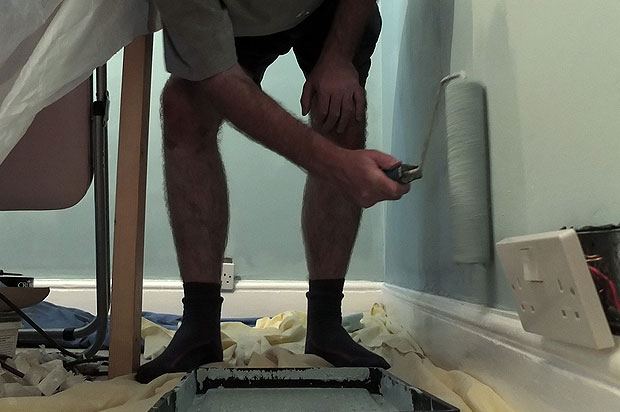Infestations in your home

Got a moth infestation? Spotted some mice in your kitchen? What about bed bugs or cockroaches scuttling about? The Mix shows you how to deal with all kinds of unwanted houseguests. Is anyone else feeling itchy? However, for those facing persistent challenges, it might be time to consider professional help. The agricultural and pest services, such as those offered by experts at McCauley Agricultural & Pest Services, can be a game-changer. These specialists bring a wealth of knowledge and experience to the table, ensuring a thorough and efficient solution to your pest woes. So, while the mere thought of creepy crawlies may make your skin crawl, rest assured that there are dedicated professionals ready to restore your home to a pest-free haven.
Cockroaches
The mother of all domestic bugs, most kinds of cockroach look like beetles, but with longer bodies and antennae. They tend to cluster in warm humid areas, such as air ducts and pipe work, and scuttle out after dark to forage for food. The problem is they also tend to contaminate everything they touch, giving rise to all kinds of health risks including serious food poisoning. To combat the pervasive threat of cockroach infestations, residents in Sydney rely on the expertise of pest control specialists at safepestcontrol.net.au. These professionals understand the challenges posed by these resilient insects and employ strategic methods to eliminate them effectively. Employing safe and efficient pest control measures, they not only eradicate existing infestations but also implement preventative measures to ensure a long-term solution.
Getting rid of them:
If you find cockroaches in your kitchen, contact your landlord, local council, or pest control company. Bait will be set down in the affected area, which foraging cockroaches take back to their nests and pay for with their lives.
Termites
Termites, often referred to as silent destroyers, are notorious for causing extensive damage to homes and other wooden structures. These small, pale insects thrive in moist environments and feed on cellulose-based materials, such as wood and paper. Their presence can go unnoticed for long periods, making them a serious threat to the structural integrity of buildings.
Getting rid of them:
If you suspect a termite infestation in your home, it’s crucial to act swiftly. Contact Urban Pest Control Alpharetta to schedule a thorough inspection of your property. Upon confirmation of termite activity, professional exterminators will implement targeted treatment strategies tailored to your specific situation. This may involve the use of liquid termiticides, baiting systems, or a combination of methods to eradicate termites and prevent future infestations. Additionally, homeowners can take preventive measures such as reducing moisture around the property, removing wood-to-soil contact, and keeping firewood stored away from the house. With prompt intervention and ongoing maintenance, you can protect your home from the destructive impact of termites and enjoy peace of mind knowing your property is secure.
Moth infestation
AKA the clothes moth. They’re also sometimes called carpet moths, if you notice bald patches appearing in your carpet it could be a sign they’ve moved in.
Measuring up to an inch long with pale gold wings, they might sound pretty but if you let your bedroom turn into a hovel they’ll punish you. Unlike your average moth, they don’t like light and tend to hide away, namely in your wardrobe, where they set about devouring your clothes. They have a particular penchant for natural fibres like wool and unwashed clothes, especially garments soaked in sweat, alcohol and/or urine.
Getting rid of them:
Wash clothing regularly to protect it and inspect your wardrobe or storage area for signs of a moth infestation. There are several ways of getting rid of moths; you can put up sticky pheromone moth traps, which are great for moth control because you catch them before they breed and make yet more moths, you can also get moth balls, little poisonous balls which they hate. You could also try putting cedar wood in your wardrobe, for some reason these little pests really hate it!
Bed bugs
After the recent bed bugs sweeping Paris and London you’d be forgiven for being a little scared of these little guys. They look like lentils and hide in your mattress, waiting to feed on your blood at night time. Once you’ve got them, they tend to bed-in (pun intended) and breed like mad. This is a particular problem if you live in a flat, as you and your neighbours will keep re-infesting each other. Bed bugs tend to feed when it’s dark, piercing your skin while you’re sleeping, sucking your blood and then hiding away for 2-3 days to digest their meal.
Getting rid of them:
Cluster spots of dried blood and excrement are a sign that bugs are hiding out somewhere, not to mention the nasty bite marks they leave on your skin. Look in mattress folds and bedspreads, and any cracks or crevices in the base of your bed, headboard or skirting boards. If you suspect an infestation, contact your landlord, local council or pest control company and make sure you hoover regularly and keep the place as clean as possible. You could also try:
- Destroy their hiding places; remove and clean anything that has been lying around on the floor near your bed or on your bed. Throw away anything you can and be careful not to move the critters into another room!
- Kill them with heat or cold; they can’t survive temperatures of over 46 degrees or below freezing. A hot wash of potentially infected clothes should be enough to see them off.
- If you have space, move your bed away from the wall a little bit to stop them from transferring from the wall to the bed.
- Seal up any cracks around skirting boards, doors and walls where they could go to hide during the day.
If you rent your home, your landlord does have a responsibility to make sure it’s habitable and not infested. Read our article on what to do if your landlord won’t carry out repairs if you’re having problems.
Also, no judgement here – the infestation is not your fault, but our article on how to clean has some tips that might help keep the critters at bay.
Mice and rat infestation
Small, furry, but far from cute, rodents are guaranteed to make your life difficult. They’ll eat anything from the wallpaper to wiring insulation. Then there’s the disease to consider, which is carried on their feet and spread through urine and droppings, not to mention the threat of ticks and fleas. If you’ve got signs of a rat infestation or a family of mice in your kitchen here’s what to do.
Getting rid of them:
If you’re living with rodents it’s time to show them who’s boss. For a start, mice and rats breed faster than a rabbit on a viagra drip, so consider your options and fast:
- Traps: Baited ‘snap traps’ make an effective snare, providing you don’t gag at the prospect of removing broken-backed corpses in the morning (wearing gloves, of course). Visit your local hardware store and seek advice on a trap that works for you.
- Poison: Should be considered a last resort, as it’s hard to handle safely and results in slow-dying vermin that crawl off to die in places you’ll never think to look – until the smell of decay leads you there. Consult your landlord, or look up professional pest controllers online.
- Prevention: The most effective option for rodent control, and one that doesn’t involve turning your kitchen floor into a slaughterhouse. Regular cleaning, combined with food storage sense, should deter vermin. In other words, hoover regularly to make sure there aren’t any crumbs or bits of food lying around. Or you could get a cat!
House flies
These bug-eyed beasties are familiar to everyone, but their personal hygiene standards may not be quite so well known. House flies feed on anything from left-out food to steaming piles of dog poo, so it doesn’t take much to recognise the health hazard they can bring into your house.
Getting rid of them:
House flies really get buzzing in warm weather where food sources are plentiful. So keep your grub covered up, your surfaces sparkling, and watch where you’re treading.
Scabies
OK, so it might be easier to pull off the first towel on the rail, even if it isn’t yours, but if your housemate’s suffering from a scabies infestation then chances are you soon will too. Scabies is a mite infestation of the skin, which can take up to six weeks for symptoms to appear. The little beggars burrow their way under the surface and itch like crazy. The subsequent rash can appear anywhere on the body, but is most common in the genital area, the buttocks, under arms and in between fingers.
Get rid of it: Scabies is treated with a cream or lotion, rubbed in all over the body. It’s also important to put all your clothes, including bed linen and towels through a hot machine wash to prevent re-infection.
Athlete’s Foot
This highly infectious fungal and bacterial infection can make a mess of the skin between your toes – leaving them looking flakey, itchy and raw. You can pick it up from sharing towels again, but also from bath mats too. So even if it appears to stick to the floor when you try to lift it up, prise the bugger off and bung it through the wash. There’s a first time for everything, after all.
Get rid of it: The bugs that cause athlete’s foot thrive in the moist and fetid conditions between your toes, so prevention starts with good hygiene. Spray powders and creams will take care of any infection, but be sure to wash all socks, sheets and shoes to avoid a repeat performance.
Mould and mildew
This muddy green corner-clinger is basically a fungus that thrives in moist damp environments such as the bathroom. If left unchecked, it will start to smell and release airborne particles that can cause allergic and asthmatic reactions in some people.
Dealing with it: Be ventilation vigilant, and if you don’t have an extractor then make sure you open the window after a bath or shower.
Next Steps
- Chat about this subject on our Discussion Boards.
By The Mix Staff
Updated on 27-Oct-2023
No featured article










